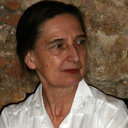[Non-structural abnormalities of CNS function resulting in coincidence of endocrinopathies, epilepsy and psychoneurologic disorders in children and adolescents].
Palabras clave
Abstracto
BACKGROUND
In the population of children and adolescents, epilepsy affects approximately 1% of cases, nonepileptic seizures are seen in approximately 3%, and endocrine disorders are several times more common. For this reason, coincidence of endocrine disorders and epilepsy and psychoneurologic disorders is frequent. Much less common are structural abnormalities (tumors, developmental abnormalities), and especially non-structural CNS abnormalities, resulting in coincidence of both disorders. There are no reports available in the literature that would address the problem.
OBJECTIVE
1) Assessment of the frequency of coincidental epilepsy and endocrine disorders in patients without structural CSN abnormalities treated as outpatients and inpatients of Department of Endocrinology University Children's Hospital of Krakow. 2) Presentation of diagnostic and therapeutic difficulties in these patients, and 3) An attempt at defining the common etiology of both disorders.
METHODS
On the basis of ICD code patients with coincidance of endocrine disorders, epilepsy and psychoneurologic disorders were selected from several thousands of children treated between 2000 and 2009 in Pediatric Endocrinology Department. The neurologic disorders were diagnosed and treated in Chair and Department of Children's and Adolescents Neurology or in another pediatric neurology center.
RESULTS
Various forms of epilepsy (symptomatic or idiopathic) and other psychoneurological disorders (disorders of behavior and emotions, obsession-compulsion syndromes, stereotypias, aggression, autoaggression, or hypothalamic obesity) coincident with one or more endocrine disorders, such as growth disorders, disorders of pubertal development, obesity, thyroid diseases, adrenal diseases, hyperprolactinemia, hypoparathyroidism and ion metabolism disorders were diagnosed in 49 patients. The group included: i) children after cranial irradiation and chemotherapy due to medulloblastoma (3 patients), oligodenroglioma (1 patient), ependymoma (1 patient), optic chiasm glioma (2 patients), suprasellar germinal tumor (1 patient), ii) children with Hashimoto encephalopathy (2 patients), iii) children with Prader-Willi syndrome (20 patients), with Klinefelter syndrome (10 patients), with Albright syndrome (9 patients). Of the 49 patients, a group of 6 children representative for individual disorders was selected. In those patients, the etiology of both endocrine disorders, epilepsy and neuropsychiatric disorders was suspected to be common, and the diagnosis was usually delayed.
CONCLUSIONS
1. Cranial irradiation and chemotherapy, encephalopathy associated with Hashimoto disease and some of the syndromes with the chromosomal and genetic background are the causes of non-structural CNS abnormalities and coincidence of endocrinopathies, epilepsy and psychoneurologic disorders. 2. MR/CT CNS imaging should be performed in any case of central neurological disorders, disorders of behavior, epilepsy or seizures, but also in patients with delayed psycho-motor development, delayed or accelerated growth and pubertal development. All of the above-mentioned manifestations may be symptoms of structural CNS abnormalities and their early treatment determines the child's future. 3. Excluding structural CNS abnormalities allows for forming suspicions associated with diseases resulting in non-structural disorders of the CNS function, predisposing to coincidence of endocrine and neurological disorders. 4. In the diagnosis of Hashimoto's encephalopathy, a decisive factor is exclusion of structural, infectious, traumatic and metabolic causes, intoxications, epilepsy and presence of neuropsychiatric symptoms in patients with high level of against TPO antibodies. In cases of steroids resistance, a good therapeutic effect may be achieved by plasmapheresis, Rituximab therapy and progestagene inhibition of the menstrual cycle.



